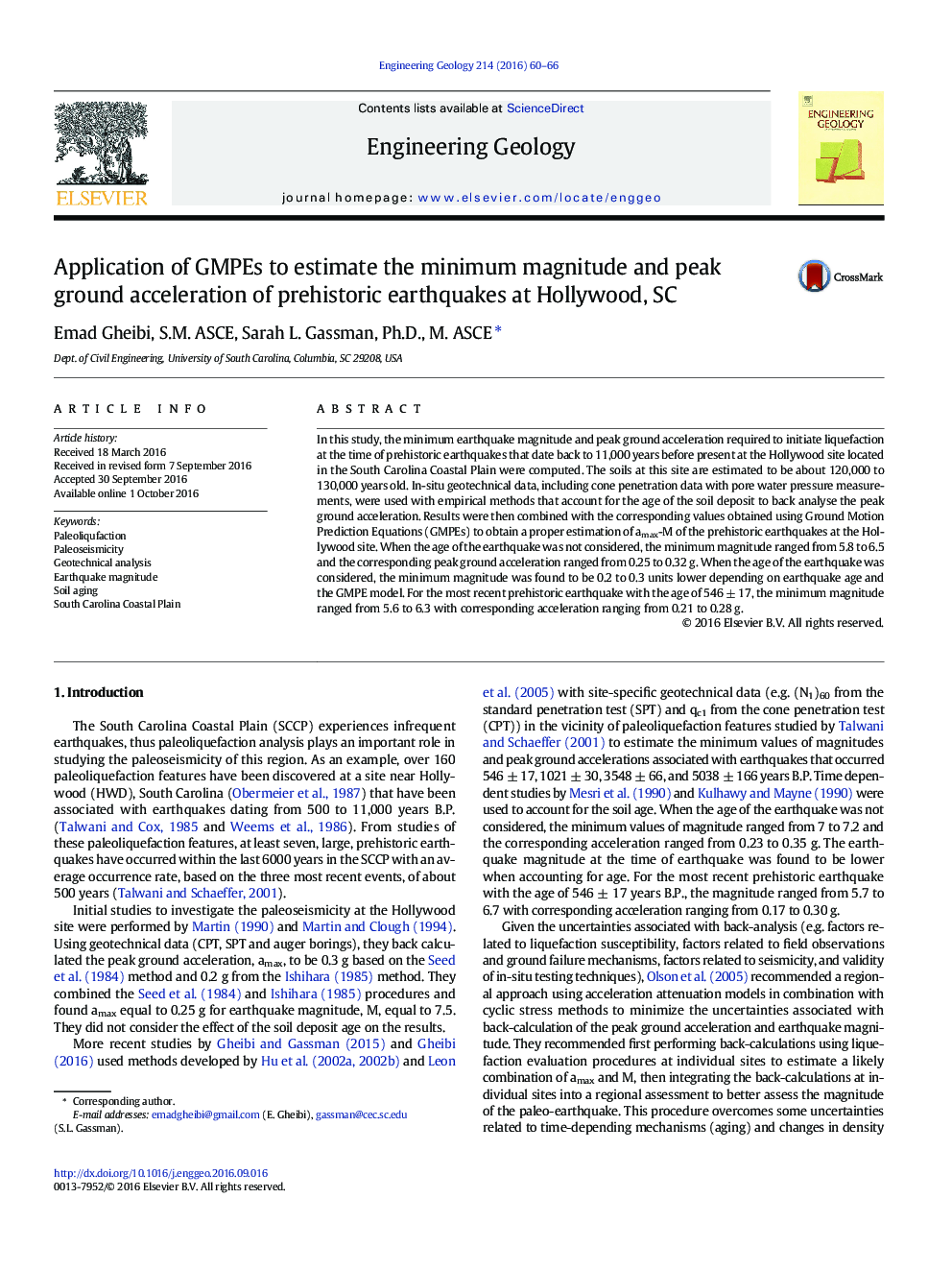| Article ID | Journal | Published Year | Pages | File Type |
|---|---|---|---|---|
| 4743042 | Engineering Geology | 2016 | 7 Pages |
•Geotechnical data was analyzed to assess paleo-seismic ground motion.•Two methods were used to account for time dependent mechanisms (aging) in soil.•Four regional attenuation models were used to find the minimum magnitude.•Considering earthquake age reduced magnitude by 0.2 to 0.3 units.•Magnitude from attenuation models was one unit less than from energy intensity method.
In this study, the minimum earthquake magnitude and peak ground acceleration required to initiate liquefaction at the time of prehistoric earthquakes that date back to 11,000 years before present at the Hollywood site located in the South Carolina Coastal Plain were computed. The soils at this site are estimated to be about 120,000 to 130,000 years old. In-situ geotechnical data, including cone penetration data with pore water pressure measurements, were used with empirical methods that account for the age of the soil deposit to back analyse the peak ground acceleration. Results were then combined with the corresponding values obtained using Ground Motion Prediction Equations (GMPEs) to obtain a proper estimation of amax-M of the prehistoric earthquakes at the Hollywood site. When the age of the earthquake was not considered, the minimum magnitude ranged from 5.8 to 6.5 and the corresponding peak ground acceleration ranged from 0.25 to 0.32 g. When the age of the earthquake was considered, the minimum magnitude was found to be 0.2 to 0.3 units lower depending on earthquake age and the GMPE model. For the most recent prehistoric earthquake with the age of 546 ± 17, the minimum magnitude ranged from 5.6 to 6.3 with corresponding acceleration ranging from 0.21 to 0.28 g.
